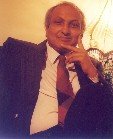In late January, 2009, McKinsey Quarterly published the
views of Prof. Hal Varian, Chief Economist with Google, on how IT needs to be understood so that it may be applied for best results.
Must family, including my 6 year old nephew, understand email to keep in touch with my brother away on an overseas assignment? No, and that is the power of technology.
Based on my work I have raised a few questions on Prof.Varian's views to define what I believe to be possible:
Is cheaper information the critical unsatisfied need for raising value-add? Will its economic stimulus match that of the assembly line or quality control movement? The massive investments in IT have not changed the ‘IT is a tool’ Knowledge work paradigm. The demand on personnel time and energy for self-organization and sharing ignores Davenport’s query of 2003:
‘We’ve been experimenting with IT support for knowledge work for several decades now. When will we figure out what works?’ The low return on investment in IT this implies may be a cause of the downturn.
Senge’s ‘The Fifth Discipline’ presents the complete philosophy of
Learning Organizations for thinking beyond the shallow cause and effect reasoning common with IT:
- Feedback forms the core of team culture
- The free flow of knowledge emerges the reality:
- Overcomes defensive reactions and disabilities
- Tests assumptions and generalizations
- Free flow urges holistic thinking over tunnel thinking
- The group learning and sharing following free flow build the team.
In sum, free flow matures enterprises to progress executive action for superior pursuit of success. Means to assure a culture for free flow is today inconceivable. Delivering an assured means to organize work and drive free flow will convert the IT paradigm to ‘IT is intelligent energy’. It will elevate IT to a major factor of production and knowledge flows to a dominant factor of success. The present goal of averting mistakes may only transfer problems across the enterprise.
Why have serious attempts at improving knowledge interactions failed to evolve the IT paradigm? Knowledge work is unpredictable, discretionary and unstructured. A one-size-fit-all process for anticipating and driving interactions is logically impossible. The ruling wisdom avers knowledge workers must self-organize for results. Per Drucker ‘
nothing else will work at all’. The wisdom has smothered ambitions for a compelling IT means to conduct Knowledge interactions. Knowledge Management swept the market in the late 90s but failed to change the work culture. The IT industry has resigned itself to urging responsibility on busy workers for a work culture to progress knowledge sharing.
Must IT remain a tool? It is possible that a mindset has prevented evolution. The eminently possible all-sizes-fit-one knowledge process can deliver the desired compelling means. Only norms are needed to assemble the repeatable actions that constitute all knowledge processes and conduct teamwork. The evolution of teamwork over centuries should establish them.
I agree with Prof. Varian that leveraging IT is critical. However, just availability of knowledge to support cause/effect deductions is not enough. This conventional use of IT only leads to short term fixingof mistakes and symptoms and not a cure. The cure can only come from appreciating the reality and responding to it. The delivery of IT must foster the flow of information, exchange of insights and testing of assumptions in context across boundaries to emerge the reality and progress unified action. Else, like the big three automobile manufacturers, the enterprise shall be left gasping in the wake of a crisis despite an advanced IT culture.
